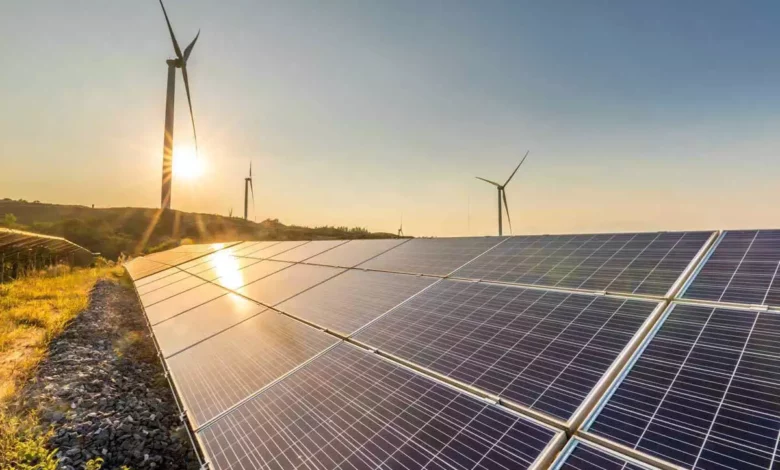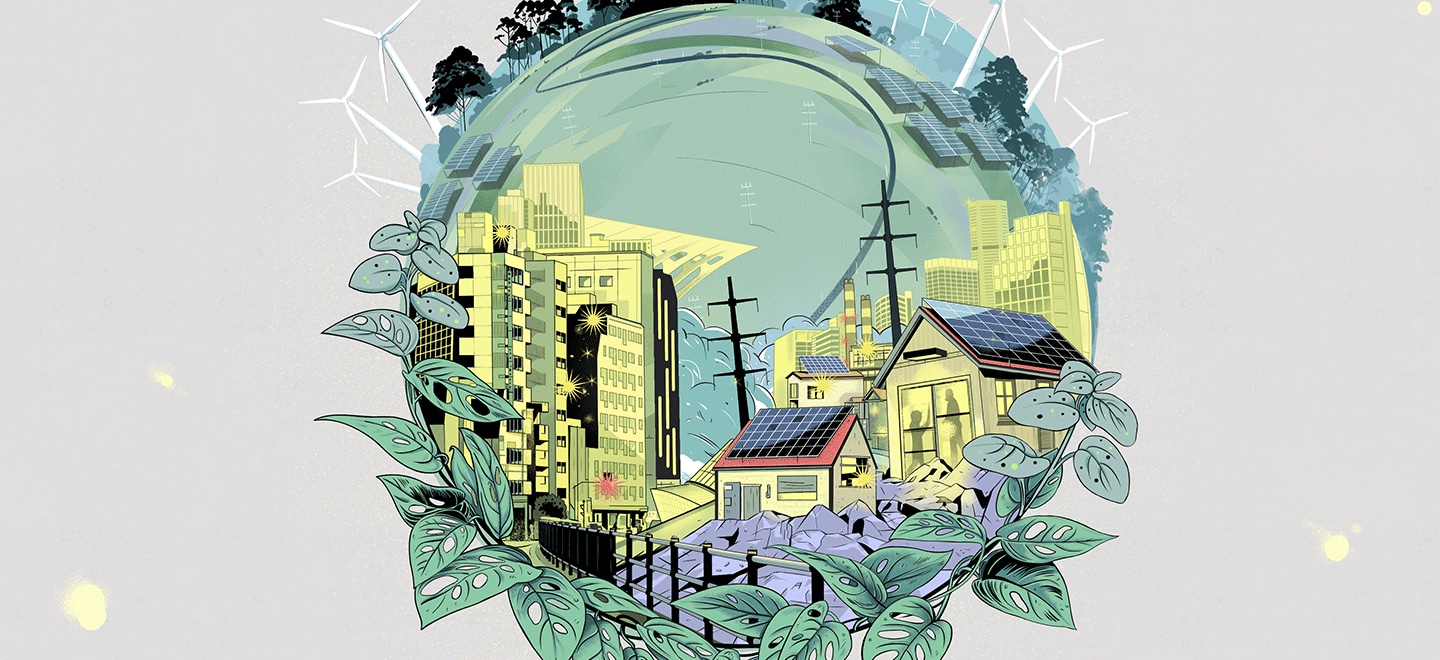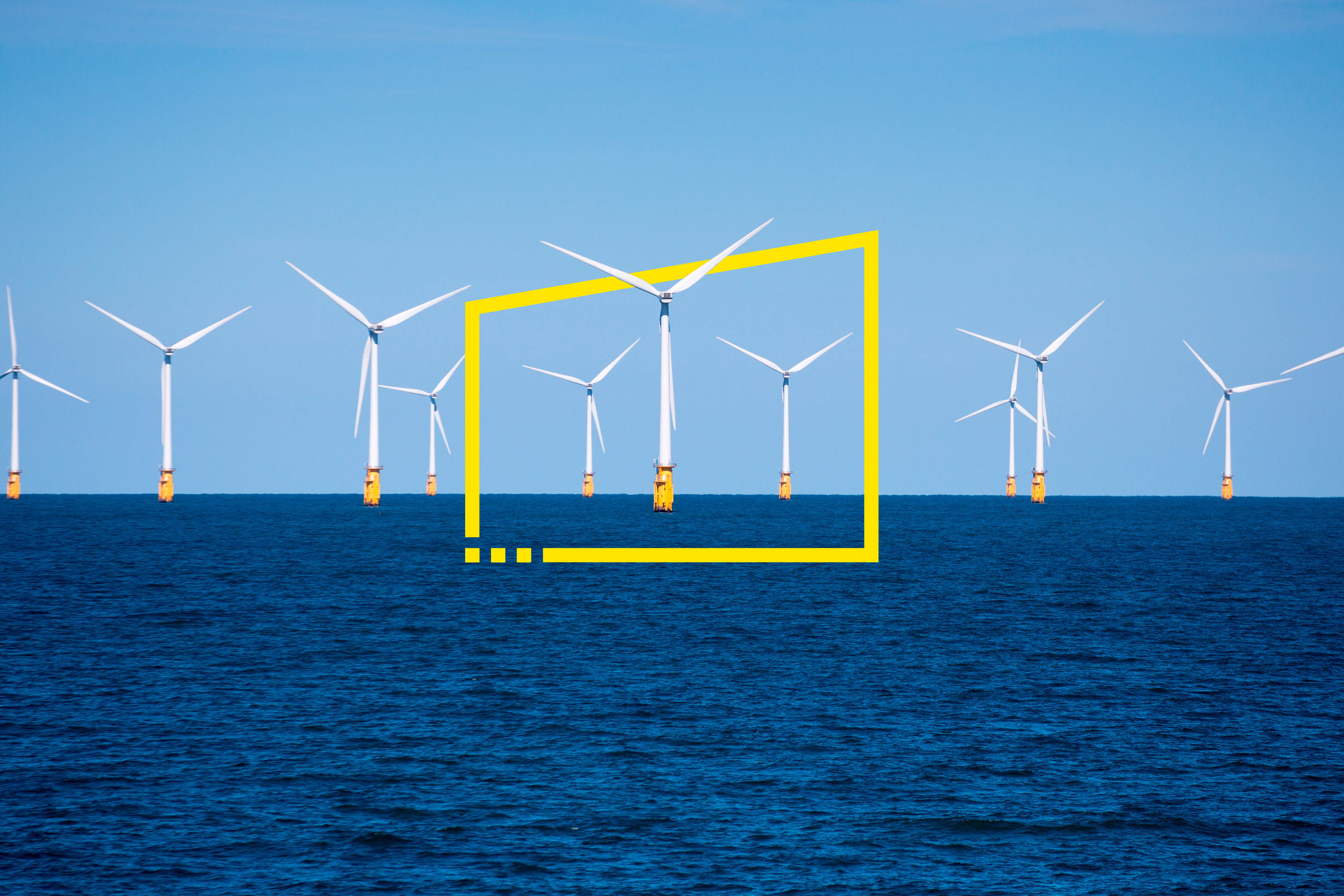In India, the private sector is increasingly driving the renewable energy sector

In India, the private sector is increasingly driving the renewable energy sector
Globally, a significant risk to human life has been created by climate change. Research from the International Panel on Climate Change (IPCC) indicates that by 2040, the world’s temperature might increase by 1.5 degrees Celsius. Each nation must immediately implement substantial mitigation measures to stop global warming if it wants to keep the global temperature trend at 1.5 degrees Celsius. India wants to meet its emission-free energy goals by 2070 to reduce the risk of global warming.
India pledged during COP-26 in Glasgow to gradually produce 500 GW of renewable energy by 2030, covering 50% of the world’s total energy demands. Given India’s increasing yearly energy consumption, the nation must concurrently transition to renewable energy sources, even if it cannot immediately rule out the use of conventional energy resources.
India’s energy sector has primarily relied on fossil fuel-based energy up to this point. But since 2020, the government has seen a significant transition to the renewable energy sector due to the increasing shortage of conventional resources today. The business sector has been instrumental in developing the nation’s energy green portfolio among the public and commercial organizations participating in implementing the RE transition. The private sector is moving away from thermal energy, which makes up the majority of its energy needs.
As a result of this rising trend in interest in the Renewable energy sector, enormous investment possibilities have arisen for both the public and the private sectors. According to the REN21 Renewables 2020 Global Status Report, between 2014 and 2019, investments totalled US$64.4 billion in renewable energy projects and initiatives. An investment of $11.2 billion was made in 2019. Bharat has experienced a substantial rise in private investment of US$18.8 billion in the renewable energy sector in 2021.
Since 2020, investment in the RE industry has increased on a national and international level by 40%. India garnered a significant portion of the overall investment that took place in 2021 in the field of solar PV installation.
India’s NSM objective incorporates a significant contribution from solar PV installation of 40%. As a result, according to the REN21 Renewables 2020 Global Status Report, investment in the solar industry has multiplied since 2020. On the other hand, the supply chain for solar photovoltaics has been heavily reliant on the importation of foreign technology and components (such as modules, cells, and wafers). The Indian government is developing the necessary policies, such as PLI schemes to increase domestic production and higher import tariffs, to make the domestic manufacturer self-sufficient.

This has sparked domestic rivalry among the participants and motivated them to boost their output and aggressively advance their technologies. Therefore, the adoption of solar energy at the industrial and commercial levels is assisting India’s move towards renewable energy and its promise to achieve net-zero power by 2070. The solar tariff rate infringes on the tariff rate for thermal energy. From an economic standpoint, the return on investment for renewable energy is more significant than for energy derived from fossil fuels. As a result, the majority of private sector utilities have replaced traditional energy usage with clean, dependable, and less expensive energy sources.
As a result, the private sector’s strong preference for Renewable energy has significantly affected large-scale advancements in the Renewable energy industry during the past few years in India. These days, there is a significant increase in demand for Renewable energy. As a result, to meet the need, India’s private sector has been playing an essential role in all aspects of Renewable energy.
The world will gain if India quickly transitions to sustainable energy

A turning point in the global effort to tackle climate change was reached when India announced that it intended to achieve net zero emissions by 2070 and to meet 50% of its power requirements from renewable sources by 2030. India is setting the standard for an innovative strategy for achieving economic growth that can avoid the carbon-intensive tactics many countries have previously followed and serve as a guide for other developing economies.
The extent of the change in India is astounding. Over the past 20 years, it has had some of the most substantial economic development in the world, pulling millions of people out of poverty. India builds a metropolis the size of London every year, increasing its urban population and necessitating extensive development of new structures, industry, and transportation systems. Up until now, coal and oil have been the foundation for India’s economic growth and modernization, providing an increasing number of Indians with access to current energy services.
This entails installing new electrical connections for each of the 50 million residents. As a result of the significant increase in the country’s fossil fuel use, India now ranks third in the world for CO2 emissions. However, India’s CO2 emissions per person rank it among the lowest in the world, and they are much lower when you take historical emissions per person into account. Similarly, Indian homes use ten times less energy than American homes.
India’s energy consumption is expected to increase more than that of any other country in the future decades due to its sheer size and enormous potential for expansion. We predict that, in order to reach net zero emissions by 2070, the majority of the increase in energy demand over the next ten years would already need to be provided by low-carbon energy sources. Therefore, it is understandable that Prime Minister Narendra Modi has set more challenging goals for 2030, including adding 500 gigawatts of renewable energy capacity, cutting the economy’s carbon intensity by 45%, and decreasing a billion tonnes of CO2.

These goals are challenging, but the shift to sustainable energy in India is already well underway, so there is good news. It has surpassed its pledge stated at the COP 21-Paris Summit by generating 40% of its power capacity from non-fossil fuels – about nine years earlier than its commitment – and increasing the percentage of solar energy. Because of advancements in technology, consistent legislative backing, and a thriving private sector, solar power facilities are less expensive to construct than coal-fired ones.
India is the primary market with the fastest pace of growth for renewable power, and by 2026, new capacity additions are expected to treble. The nation has ambitious plans to expand the use of modern bioenergy across the economy and is one of the world’s top producers of fuel. In the following years, India is anticipated to surpass China, and Canada will overtake the United States and Brazil as the third-largest ethanol market globally.
But even as it aims toward net zero, India must overcome a number of urgent short-term obstacles. Energy is becoming less cheap due to rising commodity costs, and the third-largest energy importer in the world is facing more significant risks to its energy security due to constrained market conditions. Many users continue to lack access to a steady supply of power. Many people’s health suffers unnecessarily as a result of our continued reliance on conventional fuels for cooking. Financially troubled electrical distribution businesses are hampering efficient sector reform. Indian cities now have some of the worst air quality in the world as a result of high pollution levels.
By expediting the transition to cleaner and more effective technology, India currently has a number of legislative initiatives in place that, if properly implemented, may alleviate some of these issues. In the early 2010s, gasoline and diesel fuel subsidies were eliminated, and in 2019, electric vehicle incentives were implemented. Thanks to India’s excellent energy efficiency program, buildings, transportation, and big enterprises have effectively cut their energy consumption and emissions.
Government programs to provide fuel gas for heating and cooking to millions of homes are promoting a gradual transition away from conventional biomass, such as burning wood. Additionally, India is setting the stage for the expansion of significant developing technologies, including hydrogen, battery storage, low-carbon steel, cement, and fertilizers. There is substantial economic potential in the switch to renewable energy. India is ideally positioned to dominate the global green hydrogen and renewable batteries market.

By 2030, India might experience a market growth of up to $80 billion due to these and other low-carbon technologies. To assist India in transitioning its development to a low-carbon path, support from the international community is crucial. The IEA calculates that between now and 2030, India’s energy industry would require an average investment of $160 billion annually to achieve net zero emissions. That is three times the current levels of investment. To attain net zero, it is essential to have access to low-cost, long-term financing.
More than just reducing greenhouse gas emissions is required to get net zero. The Indian populace must benefit from the country’s energy revolution, and well-planned policies may lessen the possibility of trade-offs between affordability, security, and sustainability. To achieve net zero and decarbonize the hard-to-abate sectors, green hydrogen will be a crucial component.
India aims to take the lead in producing and exporting hydrogen that is good for the environment. By generating a 5 million tonne green hydrogen demand, India could readily replace grey hydrogen in the refineries and fertilizers sector. Twenty-eight million tonnes of CO2 will be reduced due to this 5 million tonnes. It is estimated that by 2050 this percentage will increase, and 400 million tonnes of CO2 will be saved from entering the atmosphere.
Due to India’s size and population, its climate adaptation and mitigation objectives are transformational, not just in India but globally. In order to help India develop, industrialize, and improve its people’s quality of life without carbonizing, NITI Aayog and the IEA have committed to working together.
edited and proofread by nikita sharma




